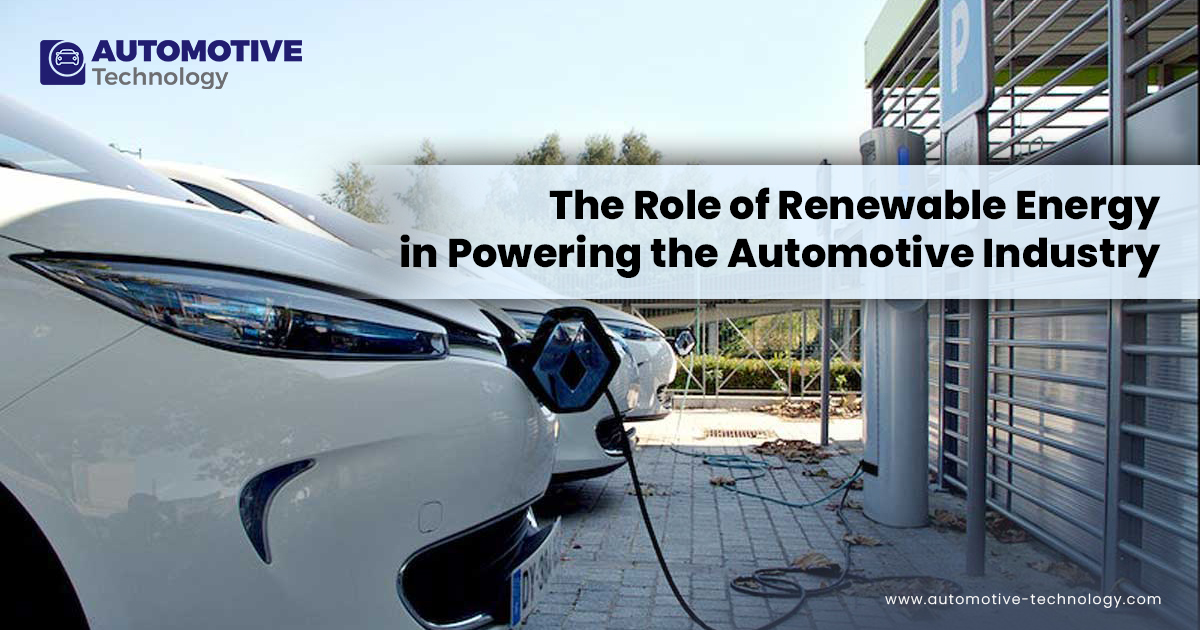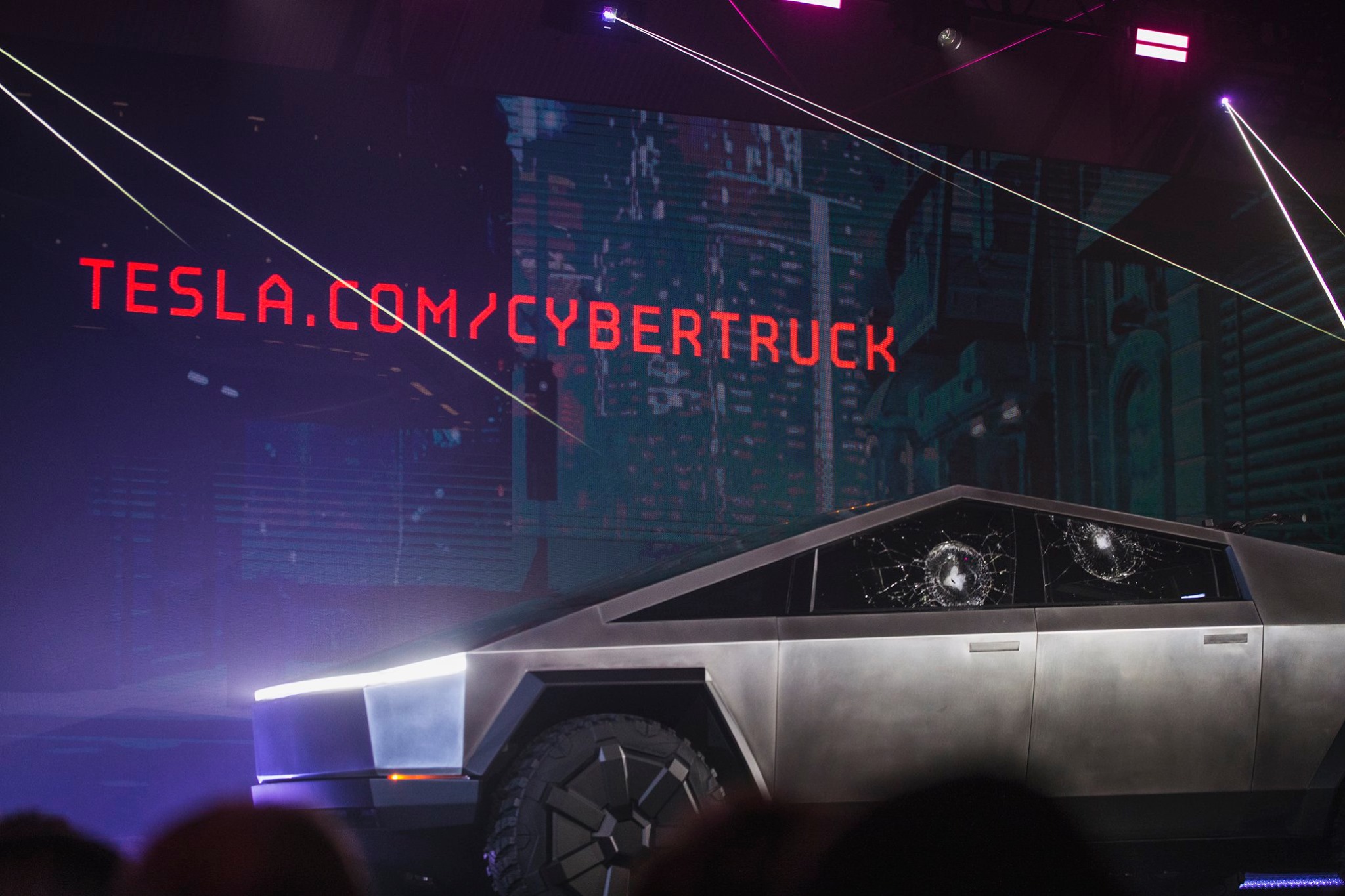
The automotive industry has witnessed a truly remarkable transformation over the past few decades, driven largely by rapid advancements in vehicle technology. Today’s cars are marvels of engineering, integrating sophisticated electronic controls that promise enhanced safety, improved fuel efficiency, and unparalleled connectivity. These innovations, from anti-lock braking systems to adaptive cruise control, undeniably contribute to a safer and more convenient driving experience for millions.
However, beneath the veneer of progress and convenience lies a growing concern that many drivers and even seasoned mechanics are beginning to voice. The proliferation of electronic control systems, while beneficial in some respects, has introduced significant drawbacks that often go unnoticed at the point of sale. These drawbacks primarily manifest as increased maintenance complexity and substantial long-term costs, subtly eroding the traditional notions of vehicle ownership and independence.
Historically, vehicles were paragons of mechanical simplicity, easily repaired with standard tools and readily available parts. Modern cars, in stark contrast, are often described as “computers on wheels,” packed with numerous electronic control units (ECUs) managing everything from engine performance to climate control. This pervasive integration of technology, while offering advantages like real-time diagnostics, simultaneously introduces a heightened risk of electronic malfunctions and, consequently, more expensive and complex repairs. This article delves into the various ways modern car technology is secretly costing consumers more money, often without their full awareness.
1. **Increased Repair Costs: Beyond the Sticker Price**One of the most immediate and impactful consequences of the automotive industry’s technological leap is the dramatic increase in vehicle repair costs. Unlike the older, mechanically simpler vehicles that independent shops could easily service, modern cars demand a new level of expertise and equipment. They frequently require expensive software updates, highly specialized diagnostic tools, and access to proprietary technology, effectively creating a barrier for many independent mechanics.
For instance, what might have been a minor, inexpensive fix in a conventional vehicle decades ago—such as a malfunctioning sensor or a digital display issue—now often necessitates the replacement of an entire, costly electronic module. These new modules typically need to be programmed to integrate correctly with the vehicle’s complex network, driving up the overall expense for car owners significantly. The shift from simple component replacement to module programming and system recalibration fundamentally alters the cost structure of repairs.
The American Automobile Association (AAA) highlights this trend, with Greg Brannon, director of automotive engineering and industry relations, noting that “Repairing cars that come with advanced driver-assistance technology or other intensively computerized features can be up to three times as expensive as similar maintenance on vehicles without such tech.” This substantial increase isn’t just an estimate; it’s a reality backed by the necessity of specialized parts and procedures.
Specific examples of these escalating costs are illuminating. Replacing a car computer system, depending on the vehicle, can range from $800 to $2,000. Even the initial diagnostic process alone might incur charges of $100–$200, before any labor or parts are factored in. When electronic repairs are needed, owners should be prepared for further surprises, as components are often proprietary, demanding factory-specific tools and diagnostic systems for proper servicing.
Read more about: Dealership Dirt Uncovered: 15 Sneaky Car Sales Tactics Every Buyer Needs to Master

2. **Reduced Long-Term Reliability: Software-Related Failures**The perception that older cars could reliably operate for decades with minimal electronic interference holds true when contrasted with the long-term reliability of many contemporary vehicles. Today’s cars, with their intricate layers of sensors, circuit boards, and control units, introduce numerous potential points of failure that are often software-related. This inherent complexity means that while the core mechanical components might endure, the electronic systems can falter, leading to unpredictable breakdowns.
A prime example of this vulnerability is the electronic throttle control system, which has largely superseded traditional throttle cables. While offering precise engine management, these systems are “prone to malfunctions that can cause unintended acceleration or throttle lag,” as noted in the provided context. Such issues are not only inconvenient but can also pose significant safety risks, disrupting the driver’s intended control over the vehicle.
Similarly, the prevalence of digital dashboards equipped with touchscreens, while aesthetically pleasing, has also brought new reliability concerns. These systems can experience frustrating “system crashes,” which may leave drivers unable to access basic yet critical vehicle functions. Imagine losing control over climate settings or navigation simply because a digital display has frozen, underscoring how deeply integrated and vital these electronic components have become to routine operation.
The comparison between traditional and electronically controlled vehicles explicitly states that older models boasted a “longer lifespan, fewer failures,” while modern counterparts are “prone to electronic malfunctions.” This stark difference illustrates a trade-off where the pursuit of advanced features can inadvertently compromise the foundational reliability that consumers have long expected from their automobiles. The digital age, while offering convenience, brings its own set of vulnerabilities to the road.
Read more about: Buyer’s Guilt on Wheels: 14 Cars Owners & Mechanics Urge You to Steer Clear Of

3. **Proprietary Software Restrictions: Limiting Your Repair Choices**A significant, yet often overlooked, challenge posed by modern car technology is the increasing reliance on proprietary software and stringent digital security locks. This manufacturer-imposed ecosystem means that car companies utilize encrypted software to actively deter unauthorized repairs. Consequently, even for what might appear to be minor fixes, vehicle owners are frequently compelled to seek servicing exclusively at authorized dealerships, severely limiting their options.
Independent mechanics, who traditionally offered more competitive pricing and localized convenience, often find themselves at a disadvantage. They “struggle to access vehicle diagnostics due to manufacturer-imposed software barriers,” as the context highlights. This lack of access to essential diagnostic tools and software effectively curtails competition within the repair market, creating a virtual monopoly for dealerships on certain types of service and repairs.
The ultimate impact of these restrictions falls squarely on the consumer. This system of proprietary control “drives up repair costs” by reducing the ability of car owners to shop around for more affordable servicing options. It renders owners increasingly “dependent on dealerships for servicing,” diminishing their independence and control over where and how their vehicles are maintained. The ‘right-to-repair’ for consumers is significantly eroded by these digital fences.
Indeed, the issue extends beyond simple preference. As advanced vehicle technologies become standard, “independent repair shops may not be able to make investments in the knowledge and equipment needed to repair advanced driver assistance systems.” This scenario can leave drivers with “their only option is to take their cars to dealerships,” even if those facilities are less convenient or more expensive. The implications for consumers are clear: “decreased competition could mean you pay more for repairs.”
4. **More Points of Failure: The Electronic Component Overload**Traditional cars, by virtue of their simpler design, had a relatively limited number of components that were susceptible to electronic failure. The mechanical nature of their systems meant fewer intricate circuits and less software to go awry. However, modern vehicles represent a radical departure, integrating electronic controls into virtually every facet of driving. This ubiquitous presence of technology inherently creates “multiple potential failure points” that simply didn’t exist in older models.
The sheer volume of electronic components means that even seemingly minor systems can become sources of frustration and expense. For instance, the context points to “Electronic parking brakes, which can malfunction and fail to disengage.” What was once a robust, purely mechanical system is now prone to software glitches or sensor failures, leading to significant inconvenience or even safety concerns.
Infotainment systems, which are increasingly large and complex, are also cited as frequent culprits, known to “freeze or suffer touchscreen glitches.” These are not just minor annoyances; they can impede access to critical functions like navigation or climate control, which are often integrated into these central displays. The expectation of seamless digital interaction often clashes with the reality of software bugs and hardware limitations.
Furthermore, the sophisticated Advanced Driver Assistance Systems (ADAS) add another layer of potential issues, sometimes providing “false alerts or deactivate unexpectedly.” Even seemingly simple conveniences like “Keyless entry systems” are not immune, being “vulnerable to hacking and electronic faults.” This dense web of integrated electronics means that modern vehicles necessitate “more frequent software updates and maintenance to avoid unpredictable breakdowns,” thereby increasing the overall “Maintenance Complexity” and costs over the vehicle’s lifespan.
5. **Sensor Overload and ADAS Recalibration Issues: The Hidden Maintenance Burden**Modern automobiles are replete with an array of sensors—from oxygen sensors to sophisticated radar and ultrasonic parking sensors—each playing a crucial role in various vehicle functions. While these sensors enable advanced safety and convenience features, their sheer number and delicate nature mean that a single failure can lead to a substantial repair bill. The expense of a “sensor replacement cost of $300–$1,200” is a common reality for many owners.
The complexity escalates considerably when dealing with Advanced Driver Assistance Systems (ADAS). Features such as lane-keeping assistance or adaptive cruise control rely heavily on a network of precisely calibrated sensors and cameras. Repairing these intricate ADAS technologies can be remarkably expensive, with costs reaching “up to $2,500 per incident” if components malfunction or are damaged.
Even seemingly minor incidents can trigger significant ADAS-related expenses. A “minor fender-bender can knock your sensors out of alignment, requiring a complete system recalibration.” This recalibration is not a simple DIY task; it requires specialized equipment and expertise, often resulting in “another $1,000+ out of pocket if you’re not protected” by an adequate service contract. The precision required is astounding, with a “sensor misaligned by a single degree” capable of throwing its target off by several feet at a distance.
The replacement of a windshield, once a straightforward operation, now serves as a vivid illustration of this issue. Many modern vehicles demand “specialized glass that allows the internal cameras to function.” Critically, after such an installation, “the cameras must be recalibrated,” adding a complex and costly step to what was historically a routine repair. This highlights how safety benefits come with a considerable “cost that comes with the repair of that vehicle.”

6. **Specialized Labor and Tools: Why Dealerships Dominate Repairs**The days when a skilled general mechanic could tackle almost any car problem are rapidly fading. With the advent of tech-heavy systems in modern vehicles, “Fixing tech-heavy systems isn’t something your neighborhood mechanic can always handle.” Instead, repairs often demand the expertise of certified technicians who have undergone specific factory training, making them specialists rather than generalists.
This specialized labor comes with a premium. The requirement for highly trained personnel, combined with the need for “pricey diagnostic tools” that can interface with proprietary vehicle software, directly translates to higher labor rates. In many metropolitan areas, these specialized labor rates can climb to “$150–$200+ per hour,” significantly inflating the overall cost of even routine diagnostic work or electronic component replacement.
Furthermore, the equipment needed for certain advanced repairs and calibrations is extraordinarily sophisticated and expensive. As a result, “not all shops are equipped to repair such vehicles.” For highly precise work, such as calibrating ADAS sensors, only a “handful of shops” possess the necessary infrastructure. These facilities must maintain “a perfectly level floor, ideal lighting, and ‘automaker-specific targets’ to calibrate sensors,” conditions that are far beyond the capabilities of most independent repair garages.
The financial outlay required to equip a shop for such advanced work is staggering; “All of this equipment can cost up to $1 million,” representing “a serious investment that only certain shops can afford.” This capital barrier limits competition and contributes to the observation from Hami Ebrahimi, chief commercial officer at Caliber Collision, who states, “It’s almost becoming too expensive to fix the car.” This dynamic funneling of complex repairs to a select few specialized centers undeniably drives up costs for the consumer.

7. **The Data Privacy Nightmare Lurking in Your Dashboard**Beyond the tangible costs of repairs and maintenance, modern car technology presents a more insidious threat: a major erosion of personal data privacy. A recent report by the Mozilla Foundation, an Internet-focused nonprofit group, alarmingly concludes that today’s high-tech cars represent the “worst category of consumer products the organization has ever reviewed” when it comes to handling users’ personal information. This startling assessment paints a grim picture of our vehicles as sophisticated surveillance devices rather than mere transportation.
Today’s vehicles are veritable data sponges, incorporating a vast array of sensors, GPS, cameras, microphones, and smartphone connectivity. This intricate network allows them to collect an “astounding range of information on their drivers and passengers,” far beyond what many consumers might imagine. From location tracking to movement patterns, and even biometric data, our cars are continuously compiling a digital dossier on our lives, often without our full, informed consent.
Perhaps most concerning is how this collected data is handled. Researchers assessing 25 popular brands’ privacy policies found that an overwhelming 21 of these companies permit car manufacturers to “share or sell customer data with external service providers, data brokers and other businesses.” Even more startling, privacy policies from two specific brands—Kia and Nissan—were found to include clauses that suggest the possibility of collecting and disclosing data on users’ “ual orientation or sexual behavior,” raising profound ethical questions about the extent of data harvesting.
The implications of such permissive data policies are far-reaching and potentially dangerous. This sensitive information could be used against vulnerable individuals, as evidenced by the possibility of sharing customer data with U.S. law enforcement or government officials “even without warrants.” In an era of evolving legal landscapes, this data could theoretically serve as legal evidence against individuals seeking private medical care. Moreover, this wealth of personal information also makes drivers a target for illegal activities; the Mozilla report revealed that “17 out of the 25 car companies experienced some form of data leak, breach or hack in the past three years,” demonstrating the real security risks involved.
As Jen Caltrider, director of Mozilla’s privacy reporting program, aptly warns, a lack of data privacy often doesn’t seem like a problem until it becomes one. She states, “It might not be impacting you now. But you might also not realize when suddenly it is, and you don’t have any choice or control over it.” Without a comprehensive federal data privacy law, and with only a handful of states granting residents the right to data deletion, the responsibility falls largely on consumers to be aware of the invisible costs their high-tech vehicles might be imposing.
Read more about: From CoupleGoals to ‘Dump Him’: How Celebrity Breakups Are Changing Our View of Love and What It Says About Us All

8. **Soaring Insurance Premiums: The Unexpected Cost of ‘Safety’ Features**Ironically, the very advanced driver assistance systems (ADAS) designed to enhance safety and prevent accidents are now contributing to an unexpected financial burden: significantly higher insurance premiums. While these technologies aim to reduce collision frequency, their complexity and cost of repair when an accident does occur paradoxically drive up the overall expense for both insurers and, subsequently, policyholders.
A study referenced in the context highlighted this peculiar trade-off: automatic emergency braking systems, for example, were found to have “reduced the frequency of claims by 25% in the United Kingdom.” However, over the same five-year period, the “cost of claims soared by 60%.” This means that while fewer accidents might be happening, the ones that do occur are becoming dramatically more expensive to resolve, eroding any potential savings from fewer incidents.
The reason for this escalation in cost lies squarely with the sophisticated components integral to ADAS. Sensors, cameras, radar, and lidar are not only expensive to replace, but the repair process extends far beyond simple component swapping. These “high-tech systems need to be properly calibrated,” a highly precise procedure that cannot be overlooked. A “sensor misaligned by a single degree – about the depth of a business card – can throw it off target by 66 inches (1,676 mm) at a distance of 100 yards (91.4 meters),” demonstrating the meticulous accuracy required.
Such exacting calibration demands specialized facilities and equipment, far beyond the capabilities of a typical auto shop. These “handful of shops” must maintain “a perfectly level floor, ideal lighting, and ‘automaker-specific targets’ to calibrate sensors.” The investment in such infrastructure can be staggering, with “All of this equipment can cost up to $1 million,” which is “a serious investment that only certain shops can afford.” This capital barrier limits competition, funnels repairs to fewer, more expensive facilities, and ultimately contributes to rising insurance payouts.
Adding to the problem, some owners actively disable driver assistance systems they find intrusive or annoying. As a result, insurance companies may find themselves “paying a lot to repair systems that drivers don’t even use.” This phenomenon, coupled with the high cost of ADAS repairs, is pushing average insurance costs to record highs, with expectations to “hit a record high of $2,101.” Thus, advanced technology, while promising safety, is undeniably playing a significant role in the rising cost of car ownership.
Read more about: Beyond the Sticker Price: Uncovering the True Financial Commitment of Car Ownership

9. **Driver Disengagement and Misleading Automation: A Safety Paradox**While modern advanced driver assistance systems (ADAS) are marketed as safety enhancements, a critical concern has emerged regarding their potential to lead to driver disengagement and confusion, paradoxically increasing accident risks. Experts, including Greg Brannon from AAA, highlight a significant “gap between what is marketed in those systems, both in the naming and in advertisements, and what the systems actually do in real life.” This discrepancy creates a dangerous situation for drivers who do not fully grasp the system’s capabilities and limitations.
Misleading terminology is a key contributor to this problem. Partially automated features, such as adaptive cruise control and lane-keeping assistance, are designed to assist but always require ultimate driver control and full attention to the road. Yet, these features are often labeled with terms like “traffic-aware cruise control” or “active steering assist,” which can erroneously imply a greater degree of autonomy than is present. The most prominent example cited is Tesla’s suite of assistance features, which are controversially named “autopilot” and “full self-driving,” despite not offering actual self-driving capabilities.
Compounding this issue is the alarming lack of proper training provided to new car owners. William Horrey, technical director of the AAA Foundation for Traffic Safety, notes that “a lot of drivers and other road users don’t really have a good grasp of what this technology is for, how it works and its limitations.” Many drivers remain unaware that some features are meant for specific scenarios, such as highways, and are unsuitable for more complex city driving environments. This knowledge gap is a recipe for misuse.
The unintended consequences of this lack of training and misleading nomenclature are severe. As driver assistance technology advances, studies suggest that “human drivers will become more disengaged.” When motorists mistakenly believe their cars can handle much of the driving process automatically, they are “more likely to check out or multitask,” diverting their attention from the road. Both Horrey and Brannon agree that this increased disengagement can lead to a heightened risk of accidents, transforming a supposed safety feature into a potential hazard.
10. **Distraction by Design: The Problem with Advanced Infotainment Systems**Beyond the issues of repair costs and misleading automation, certain high-tech features are proving detrimental due to their very design, actively harming drivers through distraction. While some technological developments undeniably enhance safety, others “veer toward tech excess that can actually harm drivers.” Among the biggest culprits are the sprawling, multilayered, touch-screen-based interfaces that have increasingly dominated new vehicle consoles.
According to David Strayer, an applied cognitive psychologist at the University of Utah who studies driver behavior, these displays have “grown larger and incorporated more components” in recent years. This proliferation of digital real estate means “There’s more information for the driver to look at,” and with an increased amount of visual data comes a greater potential for distraction. Strayer’s research indicates that “any glances away from the road that last longer than two seconds elevate crash risk,” a threshold easily exceeded by engaging with complex touchscreens.
Modern cars frequently allow drivers to perform a variety of distracting tasks while the vehicle is in motion. This includes inputting GPS directions, dictating texts, and navigating a touch screen to manage basic functions like climate control. Disturbingly, some consoles even “display video,” further absorbing a driver’s attention for periods far longer than what is safely permissible. These features, while offering convenience, directly compromise the primary task of driving.
Drivers often operate under a false sense of security, believing that “If it’s in the car, it must have been put there because it’s safe, it’s been fully vetted and it’s going to work.” However, Strayer contends that “that’s often not the case,” and a critical failing is that “We have not kept safety as our priority.” Greg Brannon echoes this sentiment, stating, “There is a point where you cross the threshold of benefit and cross into detriment. There’s no question about it.” The push for innovation has, in many instances, overshadowed the fundamental requirement of driver safety.
In a clear contrast to these intricate digital interfaces, industry research has demonstrated that “old-fashioned tactile knobs and buttons can be a much safer, simpler and easier to fix alternative to touch screens and voice commands.” Yet, returning to these tried-and-true methods would require acknowledging that relentless technological advancement is not always the optimal solution for in-car controls, highlighting a design choice that prioritizes flash over function and safety.
Read more about: Unlock Your Car’s Potential: 13 Essential Voice Commands for a Smarter Modern Driving Experience
11. **Hidden Financial Burdens for Electric and Hybrid Vehicle Owners**As the automotive landscape shifts towards electric (EV) and hybrid vehicles, a new set of hidden costs emerges, often catching prospective owners by surprise. While EVs promise environmental benefits and freedom from gasoline pumps, their upfront purchase price is typically higher, and specific post-purchase expenses can add significantly to the overall cost of ownership. These financial implications are crucial for any driver considering the transition to electrified transport.
One of the first ‘hidden costs’ often encountered immediately after purchasing a new EV is the charging infrastructure. As one Tesla owner explained, while the “charger” itself might cost “$475 from Tesla,” the installation cost can be substantial, often “$950 – literally double the price of the charger.” This initial investment for home charging, essential for convenience and cost-effectiveness, can easily exceed the price of the charging unit itself, representing an unexpected outlay.
Insurance premiums also tend to be notably higher for electric vehicles. The same Tesla owner reported paying “about $400 a month for this car, which is a lot more than its gas counterpart.” This higher cost is often attributed to the advanced technology, specialized components, and potentially higher repair costs associated with EVs, as detailed elsewhere in this article. Insurers factor in these increased risks and expenses, passing them on to the consumer.
Another surprising charge comes in the form of vehicle registration fees. While gas cars might incur around “$70” and hybrids around “$100,” electric cars often face fees of “$200.” Governments often justify this by stating that EV owners are “avoiding the gas charges you have to pay” (i.e., gas taxes). However, as the Tesla owner noted, “the whole point of buying a car like this is to avoid gas in general, so that’s kind of a slap in the face,” highlighting a perceived penalty for adopting green technology.
Beyond these initial and recurring costs, potential repair bills for EVs and hybrids can be substantial due to their specialized components. An electric motor controller module can cost “$1,200–$2,500” to repair or replace, while a battery management system can range from “$1,000–$3,000.” Even charging system repairs can be between “$500–$1,500.” Most significantly, “Battery replacements can exceed $10,000 without coverage,” making a vehicle service contract for advanced technology “even more essential for these vehicles” than for conventional ones, underscoring a significant long-term financial vulnerability.
Read more about: Buyer Beware: These 12 Popular Cars Become Costly Money Pits Once They Hit 100,000 Miles

12. **The Eroding Right to Repair and Pathways to a More Sustainable Future**The overarching theme of increasing complexity and proprietary control culminates in a significant challenge to consumer independence: the eroding “right-to-repair.” As modern cars become more technologically advanced, the ability of owners to choose where they take their vehicle for maintenance or repairs diminishes. Independent repair shops, traditionally a more affordable and accessible option, “may not be able to make investments in the knowledge and equipment needed to repair advanced driver assistance systems,” effectively limiting consumer choice.
This scenario often means that “drivers’ only option is to take their cars to dealerships,” even for issues that might seem minor. The consequence for consumers is tangible and financial: “decreased competition could mean you pay more for repairs.” Furthermore, it can necessitate traveling greater distances if a specialized dealership is not conveniently located. The Federal Trade Commission (FTC) is actively taking steps to understand these potential vehicle repair limitations, indicating the seriousness of the issue for consumer rights.
To address these growing drawbacks, while still embracing beneficial technological advancements, automakers must strive for a crucial balance between innovation and practicality. The context outlines several potential solutions to mitigate the negative impacts of excessive electronics. One key approach is promoting “Improved Modular Repair Systems,” where manufacturers design vehicles with replaceable electronic components that can be serviced individually, rather than requiring entire system overhauls.
Another vital solution is to ensure “Better Software Accessibility.” By allowing independent mechanics and even car owners to access vehicle software for diagnostics and repairs, competition can be fostered, and repair costs can be lowered significantly. Finally, there’s a compelling argument for “Reducing Non-Essential Electronics”—selectively avoiding features like gesture controls or unnecessary touchscreen integration that often add complexity and potential failure points without genuinely enhancing overall vehicle performance or safety. These steps are crucial for making future automotive technology truly consumer-centric.
Read more about: Travel changed everything: A mother’s unwavering fight for her daughter sparked a national conversation about student welfare
Ultimately, while modern cars are indeed marvels of engineering, packed with innovations designed for safety, comfort, and convenience, the extensive integration of electronic systems comes with a substantial, often hidden, financial burden. From escalating repair costs and reduced long-term reliability to serious data privacy concerns, inflated insurance premiums, and the hidden expenses of electric vehicle ownership, the true cost of today’s tech-packed vehicles extends far beyond the sticker price. Drivers are increasingly faced with a trade-off where the allure of high-tech features must be carefully weighed against the long-term financial commitment and diminished independence of vehicle ownership. As manufacturers continue to push the boundaries of automotive design, ensuring that these technologies remain practical, durable, and cost-effective will be essential for shaping a future where convenience doesn’t secretly cost us more than we bargained for.








